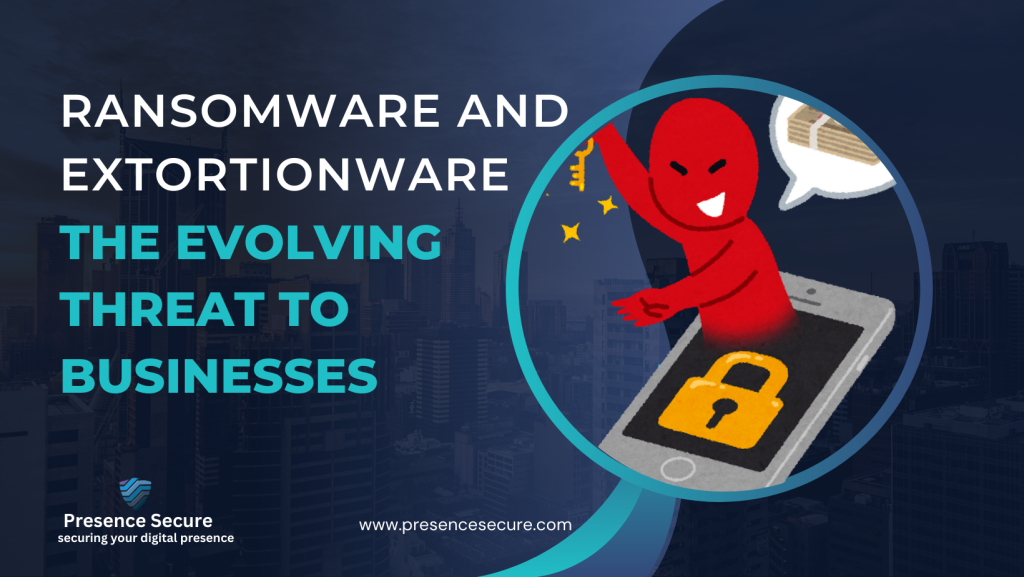In today’s digital economy, data is currency, and cybercriminals are out to hijack it. Despite sophisticated firewalls, intrusion detection systems, and strict access controls, organizations across industries are still falling victim to a fast-evolving threat: ransomware and its more ruthless cousin, extortionware.
These cyber threats have grown in scale, frequency, and severity. They are no longer isolated attacks targeting individual users; instead, they are complex, coordinated campaigns aimed at crippling entire organizations and demanding exorbitant ransoms. The reality is grim—ransomware doesn’t discriminate. Whether it’s a hospital, a school, a tech giant, or a government agency, any organization with valuable data is a potential target.
While the goal of ransomware has traditionally been to encrypt files and demand payment in exchange for decryption keys, extortionware takes it a step further. In these cases, attackers not only lock up data but also exfiltrate sensitive files and threaten to publish them online unless a second ransom is paid. This dual threat—data encryption and public exposure—amplifies the pressure on victims and raises the stakes significantly.
Just as with other cyber threats, these attacks don’t always begin with technical exploits. In fact, a vast majority of ransomware and extortionware infections begin with a simple human error—like clicking on a malicious link or downloading a compromised attachment. According to the 2024 IBM Threat Intelligence Report, nearly 80% of ransomware infections start with phishing emails or social engineering tactics.
What does this tell us?
That technology alone is not enough. The success of ransomware attacks often hinges on the human element. This means that protecting against these threats requires not only strong security infrastructure but also an organization-wide culture of cybersecurity awareness and preparedness.
Here’s how businesses can begin to build that defense:
- Educate and Train Employees
Human error remains the weakest link. Organizations must prioritize cybersecurity awareness training, focusing specifically on recognizing phishing attempts, avoiding suspicious downloads, and reporting unusual behavior. Ransomware often exploits gaps in basic user knowledge.
- Backup, Backup, Backup
One of the most effective ways to mitigate the impact of a ransomware attack is to maintain regular, encrypted backups of critical data. These backups should be stored offline or in secure, isolated environments, making them immune to ransomware encryption attempts.
- Update and Patch Systems
Unpatched software vulnerabilities are a goldmine for attackers. Regularly updating operating systems, applications, and security tools helps close the door on known exploits and zero-day vulnerabilities that ransomware operators often target.
- Deploy Endpoint Protection
Advanced endpoint detection and response (EDR) solutions can help detect unusual behavior, such as unauthorized file encryption or system changes, and stop threats in real time before damage is done.
- Implement Access Controls
Limit access to sensitive systems and data based on job roles. This principle of least privilege ensures that if an attacker compromises one account, their access to other areas remains limited.
- Create an Incident Response Plan
When ransomware strikes, every second counts. A clear, tested response plan can minimize chaos and reduce recovery time. This includes identifying who makes critical decisions, how communication is handled, and what steps are needed to restore operations.
- Consider Cyber Insurance
As a financial safety net, cyber insurance can help cover costs related to ransomware response, data recovery, legal fees, and reputational damage. However, insurers now expect organizations to have robust cybersecurity practices in place before providing coverage.
In conclusion, ransomware and extortionware are not just technical threats—they are business risks. Their impact goes beyond IT infrastructure, affecting operations, customer trust, brand reputation, and financial health. The cost of paying a ransom is only a fraction of the real damage. The time to act is now.
A successful defense against these evolving threats lies in a combination of strong technological defenses and vigilant human behavior. Training, preparation, and constant vigilance are the new business imperatives. Cybercriminals will keep innovating, but so must we.

